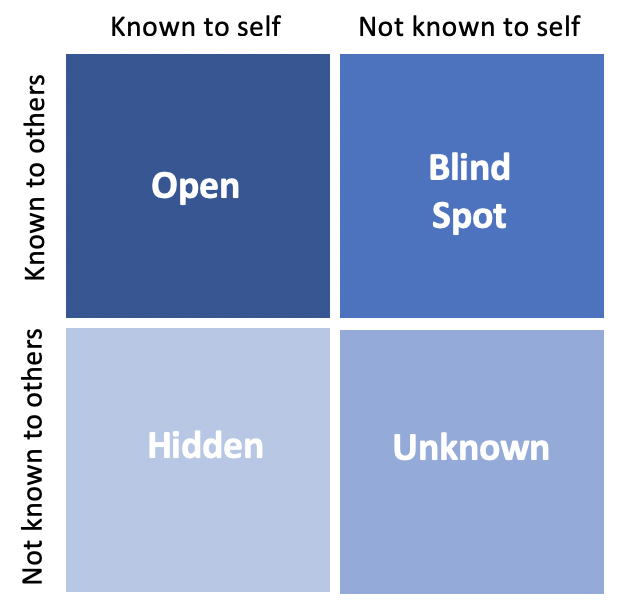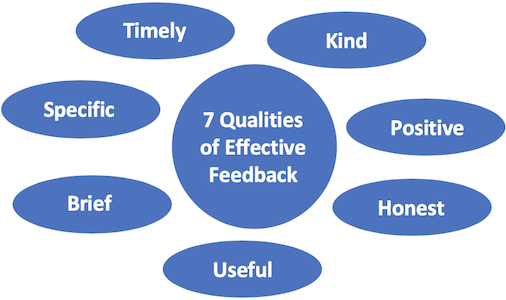Speak & Present Effectively
6 How to give & receive feedback
In this chapter you’ll learn how to give effective feedback that supports and encourages people. You’ll also learn how to accept feedback to improve your presentations.
Why is effective feedback important?
Effective feedback helps us improve. You may have heard of the Johari Window, which describes 4 parts of our self-awareness:
- Open What we know about ourselves, and is also known by others
- Blindspot What we don’t know about ourselves, but is known by others
- Hidden What we know about ourselves, but is not known by others.
- Unknown What we don’t know about ourselves, and is not known by others.[1]
Good feedback helps us learn about our Blindspot – what we don’t see about ourselves, but others do.

What makes feedback effective?
Effective feedback has 7 qualities:
- Timely Soon after the presentation
- Kind Help the listener build skills; don’t embarrass or shame them
- Positive Tell the listener what to do, not what not to do
- Honest Don’t lie to be nice. “Great job!” is kind but not useful
- Useful Suggest practical, actionable improvements
- Brief Focus on only 2 improvements (the most important ones). More will confuse the listener
- Specific Be precise and give examples

How to give feedback
There are many ways to give feedback. This simple 3-step method is easy to remember and use:
- Keep Describing the best part, what they should keep doing
- Improve Then describe the most important thing to improve, and why it’s important. Focus on ‘next time’ or ‘in future.’ For example, Speak slower so we can understand. Your topic seemed interesting and I’d like to hear all of it.
- Ask the recipient if they have questions, if what you said makes sense

How to receive feedback
We often feel ashamed or embarrassed when receiving feedback. It’s similar to the shame wave described in Chapter 2: Why am I so nervous? Most of us have a really mean inner critic who will start yelling at us for not being perfect. This makes it hard to listen and learn.
Try to silence your inner critic so that you can benefit from the feedback. These strategies will help:
Listen actively.
- Make eye contact with the person giving you feedback
- Take notes – you’ll forget what they said
- Summarize what they said
- Ask questions
Be respectful & professional.
- Watch your tone, words and body language
- Look for what’s true and what’s useful
- Avoid arguing or explaining; try to drop your defenses
Ask questions to clarify doubts and get precise details and examples.
For example:
- “Can you say more about…?”
- “Can you explain that further, please?”
- “What advice can you give me?”
- “How can I build that skill?”
- “Where could I learn more about…?”
- “What do you recommend?”
Appreciate the feedback.
- See the good in the feedback and the person who gave it to you
- Thank the speaker and show appreciation for their time and energy
- See how the feedback can help your skills and career
Reflect & grow.
Reflect on the feedback and decide your next steps:
- What did you learn?
- How will you use the feedback to improve your skills?
- What will you do next time?

Test your knowledge
- Joseph Luft and Harry Ingham, "The johari window," Human relations training news 5, no. 1 (1961): 6-7, http://www.richerexperiences.com/wp-content/uploads/2014/02/Johari-Window.pdf ↵

